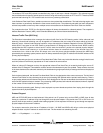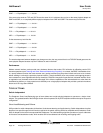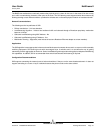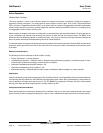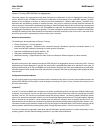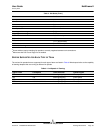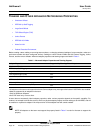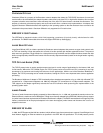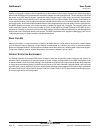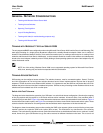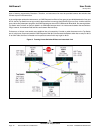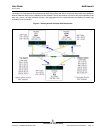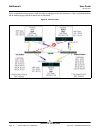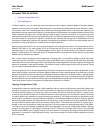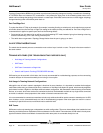
User Guide NetXtreme II
January 2010
Broadcom Corporation
Document ENGSRVT52-CDUM100-R Teaming and Other Advanced Networking Properties Page 37
CHECKSUM OFFLOAD
Checksum Offload is a property of the Broadcom network adapters that allows the TCP/IP/UDP checksums for send and
receive traffic to be calculated by the adapter hardware rather than by the host CPU. In high-traffic situations, this can allow
a system to handle more connections more efficiently than if the host CPU were forced to calculate the checksums. This
property is inherently a hardware property and would not benefit from a software-only implementation. An adapter that
supports Checksum Offload advertises this capability to the operating system so that the checksum does not need to be
calculated in the protocol stack. Checksum Offload is only supported for IPv4 at this time.
IEEE 802.1P QOS TAGGING
The IEEE 802.1p standard includes a 3-bit field (supporting a maximum of 8 priority levels), which allows for traffic
prioritization. The BASP intermediate driver does not support IEEE 802.1p QoS tagging.
LARGE SEND OFFLOAD
Large Send Offload (LSO) is a feature provided by Broadcom network adapters that prevents an upper level protocol such
as TCP from breaking a large data packet into a series of smaller packets with headers appended to them. The protocol
stack need only generate a single header for a data packet as large as 64 KB, and the adapter hardware breaks the data
buffer into appropriately-sized Ethernet frames with the correctly sequenced header (based on the single header originally
provided).
TCP OFFLOAD ENGINE (TOE)
The TCP/IP protocol suite is used to provide transport services for a wide range of applications for the Internet, LAN, and
for file transfer. Without the TCP Offload Engine, the TCP/IP protocol suite runs on the host CPU, consuming a very high
percentage of its resources and leaving little resources for the applications. With the use of the Broadcom NetXtreme II
adapter, the TCP/IP processing can be moved to hardware, freeing the CPU for more important tasks such as application
processing.
The Broadcom NetXtreme II adapter's TOE functionality allows simultaneous operation of up to 1024 fully offloaded TCP
connections for 1-Gbps network adapters and 1880 fully offloaded TCP connections for 10-Gbps network adapters. The
TOE support on the adapter significantly reduces the host CPU utilization while preserving the implementation of the
operating system stack.
JUMBO FRAMES
The use of jumbo frames was originally proposed by Alteon Networks, Inc. in 1998 and increased the maximum size of an
Ethernet frame to a maximum size of 9000 bytes. Though never formally adopted by the IEEE 802.3 Working Group, support
for jumbo frames has been implemented in Broadcom NetXtreme II adapters. The BASP intermediate driver supports jumbo
frames, provided that all of the physical adapters in the team also support jumbo frames and the same size is set on all
adapters in the team.
IEEE 802.1Q VLANS
In 1998, the IEEE approved the 802.3ac standard, which defines frame format extensions to support Virtual Bridged Local
Area Network tagging on Ethernet networks as specified in the IEEE 802.1Q specification. The VLAN protocol permits



